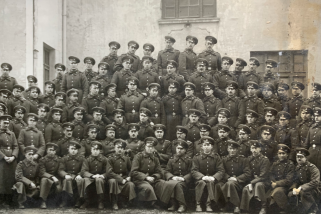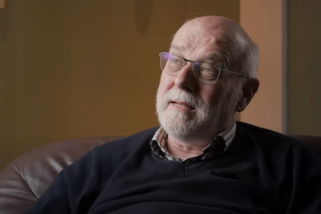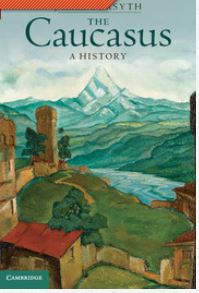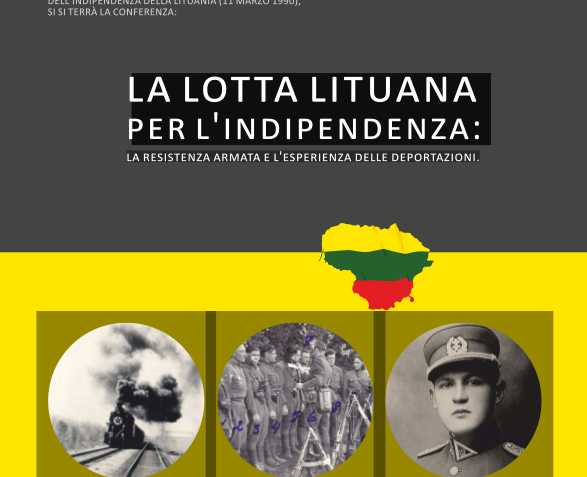Ildikó Barna and Andrea Pető
Political Justice in Budapest after WWII
In Hungary, which fell under Soviet influence at the end of WWII, those who had participated in the wartime atrocities were tried by so called people’s courts. This book analyses this process in an objective, quantitative way, contributing to the present timely discussion on the Hungarian war guilt. The authors apply a special focus on the gender aspect of the trials.
Political justice had a specific nature in Hungary. War criminals began to be brought to trial while fighting was still underway in the western part of the country, well before the Nuremberg trials. Not only crimes committed during the war were tried in the same frame but also post-war ones. As far as the post-war period is concerned, legal proceedings regarding these crimes were most often launched on the basis of Act VII of 1946. This act of law concerned “the criminal law protection of the democratic constitutional order and the republic” and its basic aim was to facilitate the creation of a communist dictatorship and to deal with perceived or real enemies of the regime.
Contents : LEGAL BACKGROUND TO THE PEOPLE’S TRIBUNALS AND THEIR OPERATION IN HUNGARY The System of People’s Tribunals and the Actors in the Process The Crimes and the Range of Punishments Controversies Surrounding the Law on People’s Tribunals RESEARCH METHODOLOGY Method of Approach Preparation Phase Pilot research Expert roundtable Training of the Encoders The Final Questionnaire Research Phase Sampling procedure From filling in the questionnaires to the data files Preparing the data files for analysis Several Notes on the Methodology and the Findings ANALYSIS OF THE PEOPLE’S TRIBUNAL CASES Types of Cases Distribution of the types of cases over time Characteristics of the Case Files Analysis of the Various Actors in the People’s Tribunals Summary of the Demographics of Defendants and Witnesses in the Various Types of Cases Lawyers Characteristics of the People’s Tribunal Cases The length of trials and the number of hearings The role of witnesses at the people’s tribunals Judgments Effect of the composition of witnesses on judgments A GENDERED ANALYSIS OF POLITICAL JUSTICE IN HUNGARY IN THE AFTERMATH OF WWII Women in Political Justice: Stereotypes and Reality about Women Perpetrators Witnesses Court Judgments Women People’s Judges Summary: Gender in political justice JEWISH IDENTITY AND THE PEOPLE’S TRIBUNALS Characteristics of the People’s Tribunal Cases Defendants and Their Characteristics Witnesses and Their Characteristics Court Judgments Jewish Identity and the Practice of Political Justice SUMMARY BIBLIOGRAPHY
“Using very original methods combining case studies and quantitative tools, mixing testimonies and statistics, this outstanding work offers a complete reassessment of the postwar justice in Hungary as well as it provides a stimulating model to analyze others forms of contemporary transitional justice.”—Henry Rousso, Institut d’histoire du temps présent, Paris
“Ildikó Barna and Andrea Peto are to be congratulated for demonstrating the potential for court records to provide precious insights on wider sociological and political phenomena and issues. The section on Arrow Cross membership, for example, contributes to the empirical refutation, if it was needed, of simplistic assumptions about the middle class nature of support for fascism in Hungary, and corroborates similar findings about the social basis of other European fascisms.”—Roger Griffin, Professor of Modern History, Oxford Brookes University, author of The Nature of Fascism (Routledge, 1993)
“In their precise quantitative analysis, based on 500 court cases, the two researchers explain the origins, functioning, and social and political composition of the so-called people’s courts. In a fi eld sadly lacking comparative studies, the two authors excel in offering a nearly unique overview of what happened in Europe as a whole to those charged with treason, collaboration, war crimes, and crimes against people. The numbers tried and sentences are dizzying but so is the subsequent high rate of amnesties. What distinguishes Hungary is that although the number of Jews killed was enormous, the survivors were numerous enough for their “grievances” to constitute nearly half of the people’s court cases. Hence the popular charge, very much alive today, that the people’s courts were but an instrument of Jewish revenge. In fact, as the book clearly reveals, Jewish victims of the Holocaust by far not always saw justice served in court.”—István Deák, Columbia University
Ildikó Barna is Associate Professor at Eötvös Loránd University, Budapest
Andrea Pető is Professor at Central European University, Budapest













